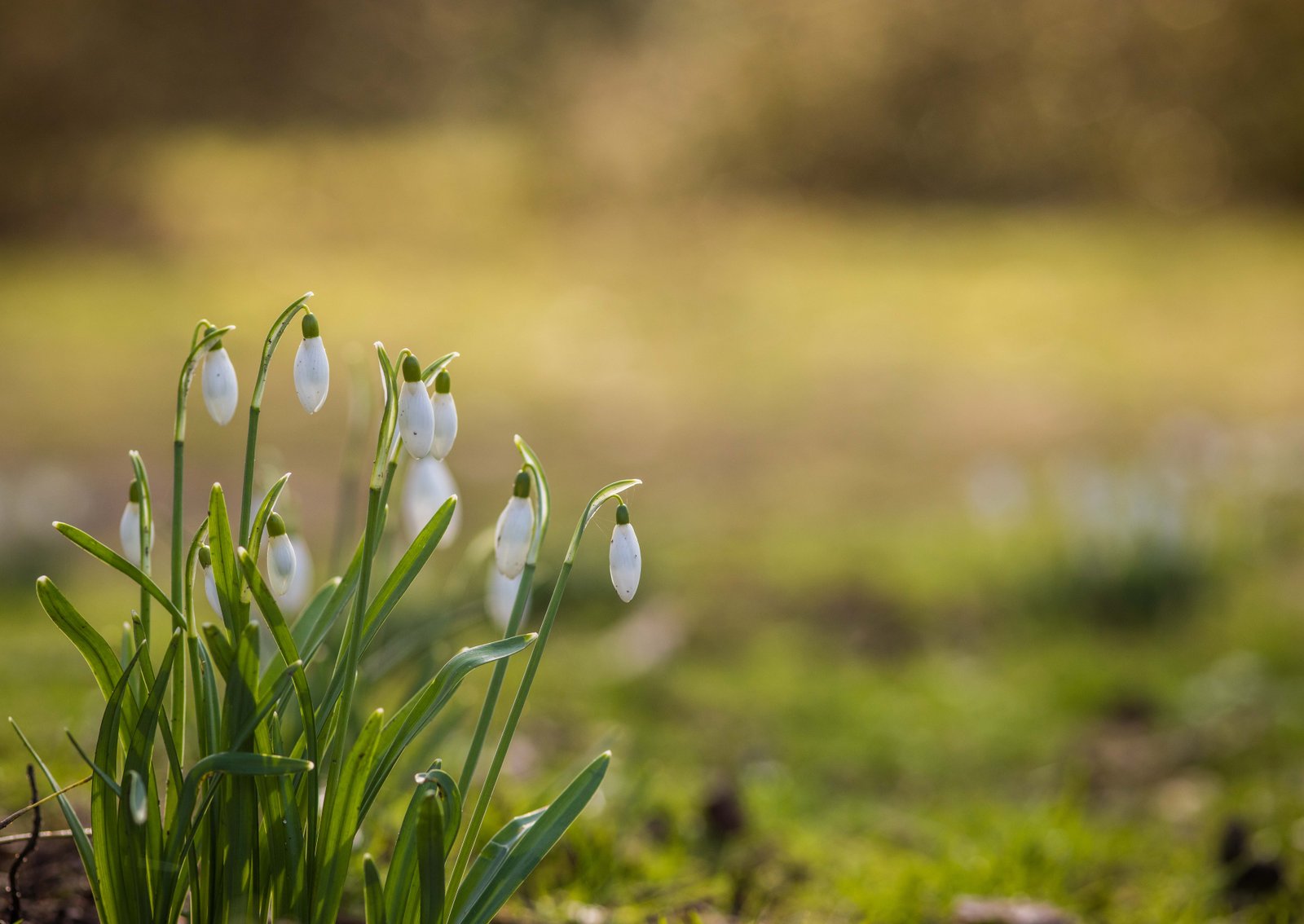
While February was all about getting things ready, March is when it all starts to happen. Snowdrops are abundant, Hellebores are adding subtle colour and bright crocuses are popping up all over the place alongside the first daffodils. The hedgerows are starting to green up, often with the pale yellow of native primroses nestling below.
Here are a few things to get you out in the garden this month…
Roses
March is the best month to plant new roses, particularly in heavy soil or colder areas so that you can enjoy their first year’s blooms this summer. We love the climbing rose ‘Madame Alfred Carriere’ for its subtle fragrance and almost thornless stems that produce large creamy white blossoms tinged with white from June through to September. It looks great trained over a pergola or along a fence or wall.
After a good tidy-up and pruning last month, you can take stock and choose the best place for your new plants. However, make sure to avoid planting directly where roses have been grown before to avoid replant disease.

Coppice your cornus sanguiea
After enjoying the bright colours of your Cornus sanguinea Midwinter Fire during the winter months, now is the time to cut back the stems so that they are ready to burst into green foliage and develop deep coloured and manageable stems next winter. Check out the RHS video here to create neat stools that will soon green up to enhance any border and create a stunning backdrop when you need some bright colour next winter.

Give your lawn some love
After a wet and muddy winter for many lawns, March is a great time to repair damage either with new pieces of turf or by overseeding patches showing poor or sparse growth. If you’ve got the space and want an alternative to a formal lawn, why not create an area of wildflower meadow? You’ll need to get cracking though as it will take several months if you use a specially seeded wildflower soil. Wildflower turf can be planted in March too. Find out more here.

Veg is best
Now is the time to direct-plant shallots and onion sets 10cm apart in rows spaced 30cm apart. Push the sets into the soil so their tips are just showing, then firm them in. Ideally cover them with fleece so that the birds don’t knock them about when they are rooting for worms in your newly-tilled soil.
If you have light, sandy soil and live in a milder part of the UK, once the soil starts to warm up later in the month you can sow broad beans, carrots, parsnips, early beetroot, salad onions, lettuce, radish, peas and spinach outside under cloches.
If you have a heated propagator you can germinate aubergines, cucumbers, tomatoes, peppers and chillies this month.

Preparing popular perennials
March is the ideal time to divide many plants just before the new growth begins. Roots can re-establish themselves quicker once the soil has started to warm up and new roots are produced at this time. Hemerocallis can be lifted with a fork to avoid damaging the roots, then split using two forks back to back before replanting 30-45cm apart. Heucheras need dividing every three years to maintain vigorous growth and strong leaf colour. Lift plants and replant the smaller stronger parts from the edges which should have good roots.
Finally, March is a great time to mulch and spread a layer of organic compost between the bulbs and where the new herbaceous growth is going to appear. Mulching will not only improve the condition of your soil with the addition of nutrients, it will also act as a weed-suppressant (by denying them light) and will help to retain moisture.
If you are not able to or don’t want to do the work yourself, we of course can help. Our Care & Development team are experts in preparing the garden for the months ahead and March is the ideal time for the first tidy and clear up of the year.
Call us on 01491 280447 or email info@greenart.co.uk for a quote…
New products in the GreenArt shop
We at GreenArt can provide help at any level
From planning a wildlife garden, building hides, constructing ponds and streams, creating paths and planting trees and shrubs.








